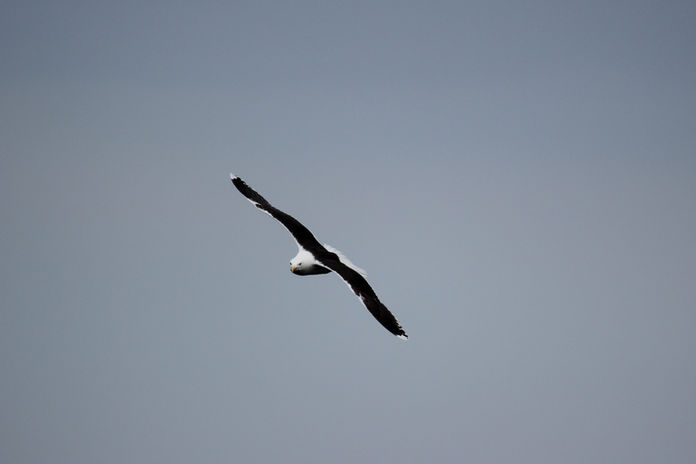

GREAT BLACK BACKED GULL
If you are a bit squeamish, I should move on to oystercatchers! The great black-backed gull is a monster of a bird. It is the largest gull, with its black wings having a wing span of one and a half metres. It has pinkish legs, whereas the lesser black-backed has yellow legs and dark grey wings.
Like a lot of gulls, the juvenile birds take a few years to adopt the adult plumage. In great black-backs it takes between 4 and 5 years to reach maturity, with each year being slightly different. I won't go into the differences here, but if you're interested, please refer to the bible or the Collins Bird Guide as it is also known.
The great black-backed gull will rob other seabirds of their fish, and raid nests on cliffs of their chicks. I have seen one eat a medium sized rabbit on the Lower East path. The farmer tries to keep an eye on them during lambing. The gulls will attack a lamb as it is being born. They will also gang up on small lambs, flying at them and knocking them down, before eating them.
They nest all around the coastline of Lundy, but they prefer an open space to nest on, as in the tops of stacks or flat-topped rocks. They do not stray far from their nests and consequently, can be seen anywhere around the coastline of Lundy. Most of the breeding birds leave Lundy during the winter but have been known to return to the island during stormy weather.






